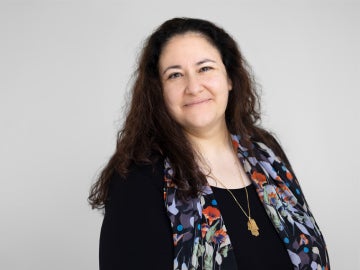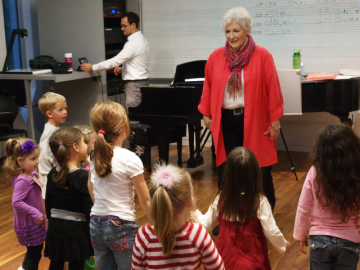Senior Symposium 2015 Preview, Part 2
April 21, 2015
Communications Staff
The Office of the Dean of Arts and Sciences and the Office of the Dean of Studies invite all members of the campus and community to celebrate the academic and artistic endeavors of members of the Class of 2015 at the sixth annual Senior Symposium on Friday, April 24, 2015.
The symposium begins at 1 p.m. in Craig Lecture Hall with opening remarks from Tim Elgren, dean of the College of Arts and Sciences. Concurrent panels begin at 1:30 p.m., 2:45 p.m., and 4 p.m., and a reception in the Science Center Academic Commons will begin at 5 p.m.
This year, 70 seniors and fifth-years on 21 panels—the largest group to date—will each give a 12-minute presentation regarding work they performed for honors or capstones or research they conducted individually or with a faculty mentor.
To get a sense of the rich variety of topics covered at this year’s symposium, the Source is sharing a handful of project abstracts written by presenting seniors in the days leading up to the event. Learn more about the students included in today’s batch by clicking individual photos in the gallery above. See yesterday’s batch here.
Andrew Groble, “Schoenberg's Moses und Aron and Modernism's Bilderverbot”
In his opera Moses und Aron, Arnold Schoenberg re-imagined the exodus story as, fundamentally, a struggle between the Idea of God and its subsequent representation, respectively personified in the roles of Moses and Aron. My research explores the opera’s basis in Schoenberg's propaganda play Der biblische Weg and the composer’s grand attempts to save world Jewry in the years before World War II. In addition, I focus on his relationship to the Modernists Ludwig Wittgenstein and Karl Kraus. I contend that their philosophies influenced Schoenberg's strict negative monotheism, which, above all else, stressed the ban on images.
Emma Hadden, “Follow the White Rabbit: Lewis Carroll's Alice Books as Cultural Canon”
Lewis Carroll’s Alice’s Adventures in Wonderland and Through the Looking Glass and What She Found There series has long captured our cultural imagination. Hundreds of writers, filmmakers, and artists have adapted its story and drawn inspiration from its pages. What is it about Wonderland that keeps us returning again and again? The Alice books’ popularity make them an ideal case study for examining how literary works become canonized and appropriated as what I term “cultural idiom.” This research project uses phenomenology, book studies, and cultural studies to uncover what keeps us captivated by Wonderland and what we find there.
Emma Kimmel, “A 16th-Century Franco-Venetian Book of Hours in Oberlin Library’s Special Collections”
Tucked away in Oberlin Library’s Special Collections is a book of Hours produced in 1523 by Venetian printer Gregorio de Gregoriis. Books of Hours were popular medieval prayer books across Europe, and Oberlin’s text is particularly compelling as its full-page illustrations originate from an unknown French book printed roughly 35 years prior. My study places this book in a social context through investigating books of Hours, the invention of print, book circulation, and early publishing in Paris and Venice. I also analyze the book’s unique aspects, theorizing the origin of the French illustrations and their sometimes peculiar placement and repetition.
Megan Michel, “Sperm Pairing in the Gray Short-Tailed Opposum, Monodelphis domestica”
I investigated the mechanism of sperm pairing in the gray short-tailed opossum, Monodelphis domestica. During maturation in the epididymis, M. domestica spermatozoa pair up, adhering at their acrosomal faces. Paired spermatozoa traverse the female reproductive tract, unpairing just before fertilization. I hypothesize that extramembranous sugar residues mediate pairing, and that sperm unpair in crypts in the oviductal isthmus. I examine reproductive tissues histologically to identify when and where sperm unpair. I also stained sperm with fluorescent sugar-binding proteins. My results suggest that unpairing occurs in the oviductal crypts, and that N-acetyl-galactosamine residues may play a role in sperm adhesion.
Annika Nelson, “The Effects of Light on Ant-Aphid Mutualisms”
Ants frequently form mutualisms with herbivorous insects, protecting them from predators in exchange for food. The occurrence of ant mutualisms is highly context-dependent, depending on a variety of biotic and abiotic factors. However, the mechanisms driving the context-dependency of ant mutualisms are largely unknown. At the Rocky Mountain Biological Laboratory in summer 2015, I investigated why an ant-aphid mutualism occurred in the sun but not in the shade. I determined that aphids likely produce fewer resources to attract ants in the shade, although light does not directly affect ant foraging. Future research should continue to evaluate why ant mutualisms are context-dependent, as well as how they impact broader communities.
Kalind Parish, “Errors in Judgment: The Fundamental Attribution Error and Supreme Court Decision-Making”
Supreme Court decision-making will allow us to better understand how justices write their opinions and will provide us with a frame of reference for removing undue considerations from our justice system. My paper asks two simple questions: Does the Fundamental Attribution Error (FAE) correlate with Supreme Court outcomes, and what factors drive the Error's presence? I explore these questions using an econometric approach from content-analyzed Supreme Court opinions. It is anticipated that the Error will not be statistically present, but that, in the few instances when it is, the Error will be positively correlated with non-majority opinions, emotional language usage, and "politicized" questions of law (analysis ongoing).
Claire Payne, “A Reevaluation and Reinterpretation of the Association for the Advancement of Women, 1873-1897”
The Association for the Advancement of Women was an ideologically diverse late 19th- century American women’s group. Over the last few decades, general interest in women’s history has increased—yet historians still tend to overlook or dismiss the AAW. Using published papers from the organization’s annual Congresses and contemporaneous newspaper accounts as evidence, my research first questions why the few authors who have considered this Association have treated it so simplistically. I then argue that the AAW’s work, which led to important network-building and idea-sharing among early feminists, should instead be read as significant and progressive.
Alexander Riordan, “Suddenly, I Remember: Hormonal Treatments Rescue Memory in an Animal Model of Schizophrenia”
Schizophrenia is a debilitating disorder with great personal and societal costs. Current treatments for schizophrenia fail to adequately reverse the condition’s most devastating symptoms, which include deficits in memory. Therefore, new treatments are needed. In the present study, we show that inhibition of luteinizing hormone causes recovery of recognition memory in a rodent model of schizophrenia. We also replicate previous work showing that estrogen has a similar therapeutic effect. Finally, we present data suggesting that these treatments restore memory by repairing cells that act as “brakes” on brain activity—particularly in the hippocampus, a brain area important for memory.
Simbarashe Runyowa, “Conceptualizing a Developmental State in Post Genocide Rwanda”
Western scholars writing about the development trajectory of postcolonial states in Africa have often characterized those countries that have been economically successful under undemocratic regimes using theories and conceptualizations which invoke the trope of African leaders as tactless dictators. Using post genocide Rwanda as a case study, I argue that it is both possible and useful to conceptualize that genus of African state through the prism of the East Asian developmental state archetype. More specifically, I argue that the socio-political context which emerged in the aftermath of the Rwandan genocide created a set of political incentives for policymakers to facilitate the creation of a developmental state.
You may also like…
Remembering Former Visiting Assistant Professor Leila Ben-Nasr
Leila Ben-Nasr, a former visiting assistant professor of comparative American studies, died on November 28, 2025.
Oberlin Community Remembers a Beloved Retired Professor
A member of Oberlin faculty for 13 years, Peggy Bennett was known by students and the Oberlin community for creating and leading MusicPlay, a preschool classroom and learning lab run as part of the...
Eric Rooks Named Director of Campus Safety at Oberlin
Longtime public servant emphasizes collaborative partnerships and kindness.


